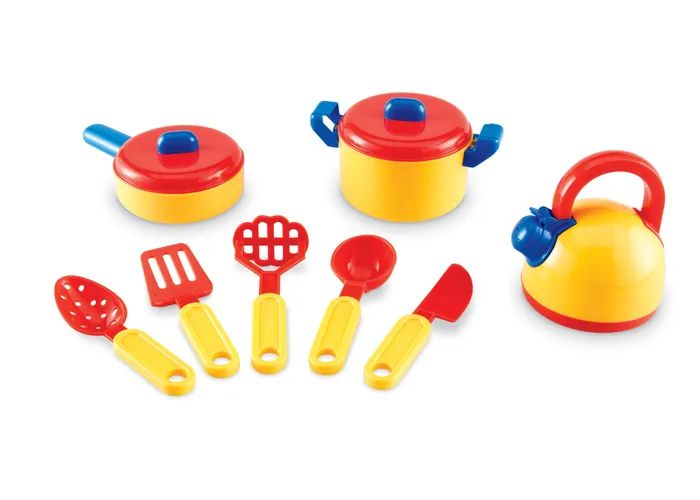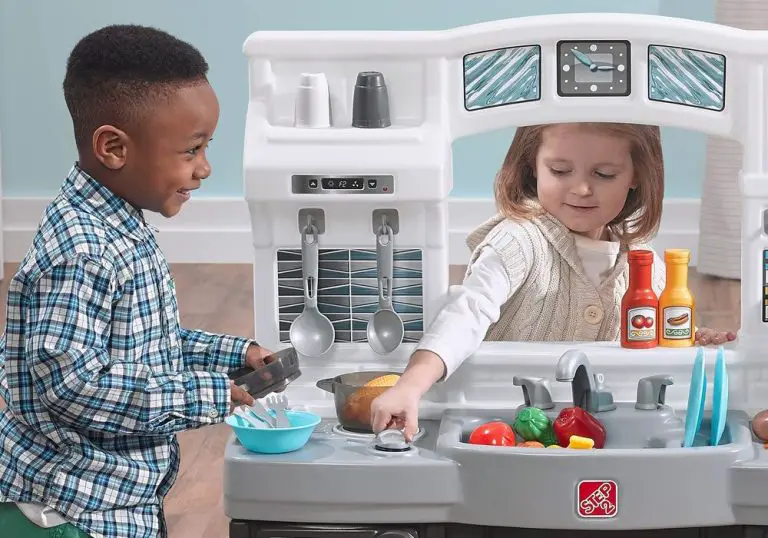Is A Play Kitchen A Good Toy?
Benefits of Play Kitchens
One of the main benefits of play kitchens is that they encourage children’s imagination and roleplay. As children pretend to cook meals, bake treats, and serve food in their play kitchen, they stretch their creativity and act out various scenarios. This type of imaginative, open-ended play allows kids to explore different roles, work through real-life situations, and develop cognitive, social, and emotional skills (https://www.plumplay.co.uk/blog/8-benefits-of-play-kitchens-for-children/).
Play kitchens also help develop children’s fine motor skills. As they stir, pour, slice, scoop, and more, kids build coordination and dexterity in their hands and fingers. The motions involved in kitchen play mimic many of the same movements used in real cooking. Working the play kitchen accessories gives children great practice for tasks like buttoning, zipping, and tying (https://www.earlyyearsresources.co.uk/blog/2018/05/play-kitchen-benefits/).
In addition, play kitchens allow kids to learn concepts like counting, colors, and sequencing. As they pretend to follow recipes, measure ingredients, and cook full meals, children grasp basic math and science principles. Sorting play food and dishes also reinforces classification, categorization, and organization skills (https://averyandruth.com/blogs/mindful-bonus/9-unexpected-benefits-of-unstructured-kitchen-play).
Finally, play kitchens promote independence in young kids. Having their own special play space allows children to direct their own activities, make their own menu choices, and gain confidence in their abilities. Play kitchens provide a safe environment for kids to take on new challenges, practice self-help skills, and build self-esteem.
Best Ages for Play Kitchens
Play kitchens are designed for toddlers and preschoolers, typically starting around 18 months old up to age 5. According to one source, “A play kitchen makes the perfect toy for 2 and 3 year olds. But, as your child’s play increases in complexity, it will hold their interest well beyond this age.” [1] The pretend play and imitation of daily activities with a play kitchen resonates with this age group as they observe parents and older siblings cooking.
Many play kitchens are adjustable in height or designed as playsets kids can grow into. Look for play kitchens with adjustable legs or multiple height settings so the kitchen can be lowered as a toddler becomes a preschooler. This ensures it provides value as your child ages and gains new abilities. [2] The ability to adjust the height over time is an important feature when considering the long-term usability of a play kitchen.
[1] https://www.nurturingfamilyandself.com/ultimate-guide-play-kitchens/
[2] https://www.tinylandus.com/blogs/collections/what-age-for-play-kitchen
Safety Considerations
When selecting a play kitchen for children, it’s important to keep safety in mind. Look for models made from non-toxic materials, as kids may try to taste or chew on the play food and accessories. Avoid small, detachable parts that could become a choking hazard if swallowed. Supervision is key – don’t allow young children to play with a kitchen unsupervised. Establish some basic kitchen safety rules, like wearing clean clothes, being careful around hot surfaces, and proper hand washing. According to sources like UNL Food and Kids Cooking Activities, following simple guidelines will allow kids to safely enjoy imaginary culinary play.
Types of Play Kitchens
There are several types of play kitchens for kids to choose from, each with their own pros and cons:
Wooden
Wooden play kitchens have a classic, realistic look. Made from materials like solid wood or MDF (medium-density fiberboard), wooden kitchens are durable and high quality. Brands like KidKraft offer many wooden play kitchen designs with details like cabinets, oven doors, and sink areas that really open and close.
Plastic
Plastic play kitchens are typically more budget friendly while still promoting creative pretend play. Many plastic kitchens feature bright colors and lights/sounds for added interactivity. The Step2 line has plastic play kitchens made of durable kid-tough materials.
Cardboard
Simple cardboard play kitchens, like those from IKEA, offer an affordable starter kitchen option. These lightweight, basic designs allow kids to explore cooking and develop motor skills. While cardboard won’t withstand rough play as well, it provides imaginative fun.
Interactive Digital
Interactive play kitchens incorporate technology like apps, voice recognition, and sound effects to enhance pretend play. The Step2 Grand Gourmet Chef’s Kitchen, for example, has an interactive tablet with cooking games and recipes for added engagement.
Kitchenettes vs. Full Kitchens
Kitchenette-style playsets are compact with the most essential kitchen elements like a sink, stove, cabinets, and appliances. Full play kitchens are larger units with extra storage, surfaces, and accessories for more immersive play.
Key Features to Look For
When selecting a play kitchen, there are some key features to look for that make play more interactive and imaginative for kids:
- Oven/microwave doors that open – Look for play kitchens where the oven and microwave doors can open and close just like a real appliance. Kids love this added realism.
- Working knobs and appliances – Knobs that click when turned and appliances like a working play fridge or oven with lights and sounds make the play kitchen more lifelike.
- Sink with running water sounds – A play sink with buttons or sensors that make water noises encourage roleplaying washing dishes or cleaning vegetables.
- Shelving – Shelves give kids storage to organize their play kitchen accessories and pretend food.
- Play food/accessories – Play kitchens are most fun when stocked with toy pots, pans, play food, kitchen tools, and dress-up items like aprons and chef hats (Cubby). Look for a variety of accessories to spark the imagination.
The more real-life features a play kitchen includes, the more it encourages imaginative, interactive play for kids. Sturdy construction and attention to realistic details help create an immersive experience.
Space Considerations
When looking for the perfect play kitchen, it’s important to first measure the area where you plan to set it up. Play kitchens can vary widely in size, some being quite large and elaborate. Be sure to get accurate measurements of length, width, and height of the available space before shopping.
For those with limited room, such as apartments or small homes, compact or foldable play kitchen models are great options to consider. These can often be folded up or disassembled after playtime to tuck away neatly. Look for smaller play kitchen sets, or those with detachable parts that don’t take up much space. A corner play kitchen is another smart choice for fitting into tight areas.
Before purchasing, think about not just the kitchen itself, but also accessories like play food, pots and pans, which will require storage space too. Prioritize multi-level and vertical storage in the play kitchen to maximize space. And make sure to account for kids being able to comfortably access and move around the play kitchen you choose.
Costs
Play kitchens can range dramatically in price from around $50 to over $500 for more premium playsets. While it’s important to consider your budget, you don’t want to sacrifice quality and safety to save money. Some factors that influence cost include size, materials, included accessories, and add-ons like lights and sounds. As Walmart’s play kitchen selection shows, you can find basic plastic units for under $100 and more realistic wood sets for over $300.
We recommend looking for kitchens made of durable materials like wood, steel, or solid plastic over flimsy cardboard options. Prioritize ones with safety certifications and supervision for younger kids. It’s also worth investing in kitchens that will grow with your child, with adjustable shelves, hooks for accessories, and space for more than one chef. While pricier doesn’t always mean better, quality materials and flexibility make a play kitchen a better long-term value.
Alternatives to Play Kitchens
A play kitchen is a popular toy for young children, but there are other toys and activities that can also foster imagination and role-playing around cooking and food. Some alternatives to consider include:
Cooking sets – Instead of a full play kitchen, opt for a cooking set with pots, pans, utensils and play food. These allow for pretend play but take up less space. Popular options are the IKEA Duktig Cooking Set and Little Tikes Gourmet Kitchen.

Food toys – Items like play dough, fake food, and kitchen sets encourage kids to play restaurant or grocery store. Stuffing a shopping cart with plastic fruits and veggies builds fine motor skills.
Dress up as chefs – Let kids wear aprons, chef hats, and oven mitts to role play cooking in the real kitchen or use costume pieces with food toys.
Helping in the real kitchen – Supervised participation in age-appropriate cooking tasks teaches kitchen skills. Let kids mix, pour, stir, and assemble ingredients.
Reviews of Top Play Kitchens
Here are reviews of some of the top-rated play kitchens on the market:
KidKraft Ultimate Corner Play Kitchen
The KidKraft Ultimate Corner Play Kitchen is designed to fit in a corner to maximize play space. It has a oven, microwave, fridge, and freezer. There’s plenty of shelving and storage space.
Pros: Large size, sturdy construction, lots of accessories included, versatile design fits in corners
Cons: Expensive, assembly can be tricky
Step2 Fun with Friends Play Kitchen
The Step2 Fun with Friends Play Kitchen features two sides so multiple kids can play together. It comes with an oven, burner, sink, fridge, and microwave. The realistic kitchen accessories encourage roleplay.
Pros: Dual sides for multiple kids, variety of accessories, relatively affordable
Cons: Takes up a lot of space, materials feel a bit flimsy
Hape Wooden Kid’s Play Kitchen
The Hape Wooden Kid’s Play Kitchen has a compact, quality wood design perfect for small spaces. It includes an oven, burners, sink, and cabinet storage. The simple, open design allows for creativity.
Pros: Real wood material, great for small spaces, neutral design fits any décor
Cons: Doesn’t have as many accessories or features as larger units
Final Verdict
Overall, play kitchens are highly recommended as an engaging toy that provides children with great benefits. Through imaginative role play with a toy kitchen, kids can develop motor skills, language skills, social skills, literacy, math, and more. The best ages for play kitchens are typically 2-6 years old, when children are in the prime stages for learning through pretend play.
When choosing a play kitchen, opt for a durable model made of high-quality materials. Look for fun features like “clicking” knobs, oven doors that open, play food, and kitchen accessories to allow for rich imaginative play. Make sure to consider the space you have available and your budget. While play kitchens come in all shapes and sizes, prioritize safety and longevity over unnecessary bells and whistles.
With the right play kitchen, you can provide hours of developmental fun and lay the foundation for future culinary skills and interests. Play kitchens allow children to experiment, get creative, and engage with the world around them.




